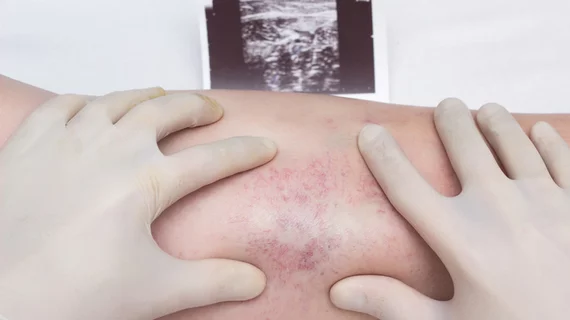COVID-19 linked to greater risk of deep vein thrombosis, pulmonary embolism and bleeding events long after recovery
COVID-19 patients face a heightened risk of deep vein thrombosis (DVT) for up to three months after their infection, according to a new analysis of more than five million patients published in The BMJ.[1] Researchers also noted a higher risk of pulmonary embolism for up to six months and a higher risk of bleeding events for up to two months.
“Previous studies on the risk of venous thromboembolism after COVID-19 have shown conflicting results,” wrote lead author Ioannis Katsoularis, MD, a cardiologist at Umeå University in Sweden, and colleagues. “Although a meta-analysis reported an incidence of venous thromboembolism of around 13%, the study included mainly patients with severe COVID-19 during the first wave of the pandemic. Another report, including studies with a control group design, did not show an increased rate of venous thromboembolism. With such conflicting data, large nationwide studies are needed to better determine the risks of venous thromboembolism after COVID-19.”
Katsoularis et al. gathered data on 1,057,174 patients with a confirmed COVID-19 diagnosis in Sweden from February 2020 to May 2021. Disease severity ranged from one patient to the next, ensuring the findings would reflect all COVID-19 patients and not just a certain subset of that population. An additional 4.07 million control patients were also included in the team’s analysis.
Overall, COVID-19 patients were associated with a significantly higher incidence rate ratio for deep vein thrombosis, pulmonary embolism and bleeding events. The incidence rate ratio for a first pulmonary embolism was especially high for the two weeks after infection. Looking closely at 30-day data, the team found incidence rate ratios of 5.90 for deep vein thrombosis, 31.59 for pulmonary embolism and 2.48 for bleeding events. Even after the authors ran a separate analysis adjusting for potential cofounders, those incidence rate ratios were still 4.98 for deep vein thrombosis, 33.05 for pulmonary embolism and 1.88 for bleeding events.
Also, patients with more severe COVID-19 symptoms were linked to a higher risk of these complications. A history of long-term anticoagulation therapy, meanwhile, was linked to a higher risk of experiencing a bleeding event after a COVID-19 infection.
“The present findings have major policy implications,” the authors wrote. “Our findings arguably support thromboprophylaxis to avoid thrombotic events, especially for high-risk patients, and strengthens the importance of vaccination against COVID-19. It remains to be established whether SARS-CoV-2 infection increases the risk of venous thromboembolism or bleeding more than it does for respiratory infections, such as influenza, but also whether the period of thromboprophylaxis after COVID-19 should be extended. Future clinical research would be beneficial in this context.”
Related COVID-19 Content:
How the availability of vaccines impacted outcomes among STEMI patients with COVID-19
COVID-19 linked to a higher risk of diabetes for at least 1 year
Risk of vaccine-related heart damage after booster shot lower than it was after first 2 doses
COVID-19 vaccines safe for patients with a history of heart damage
Reference:

